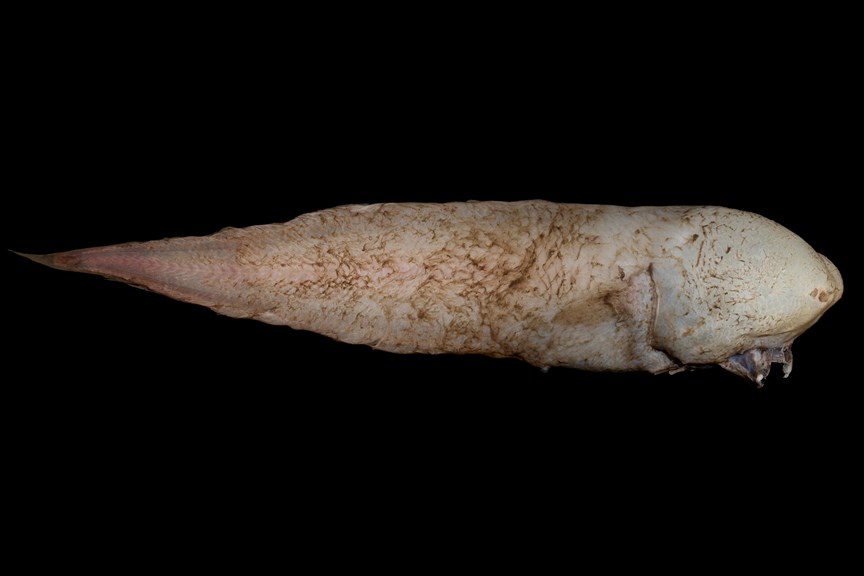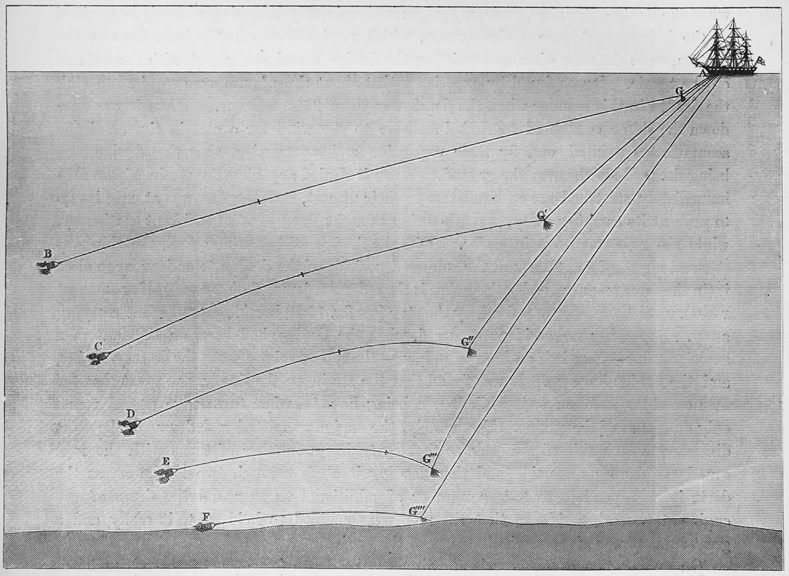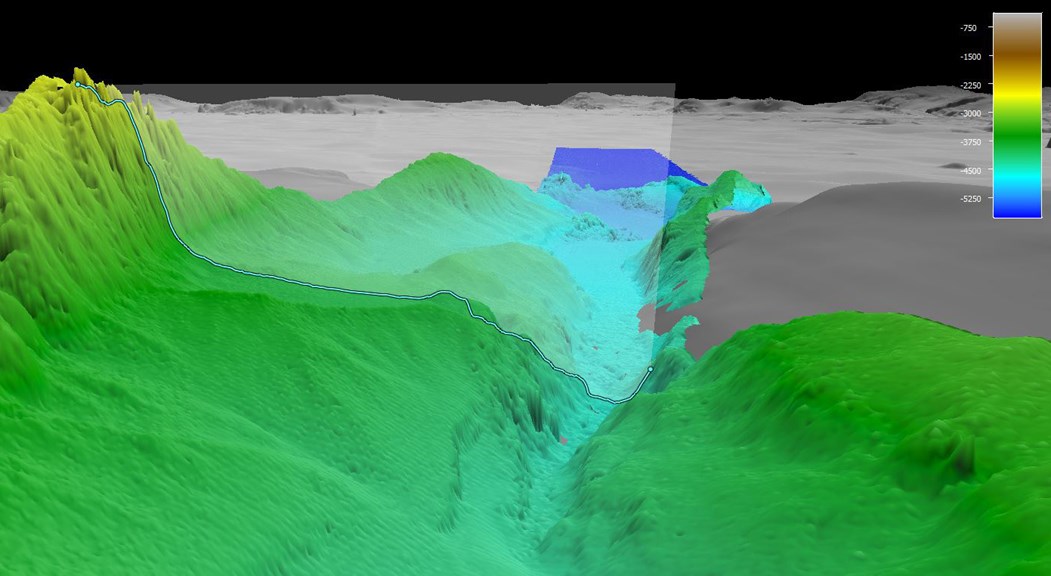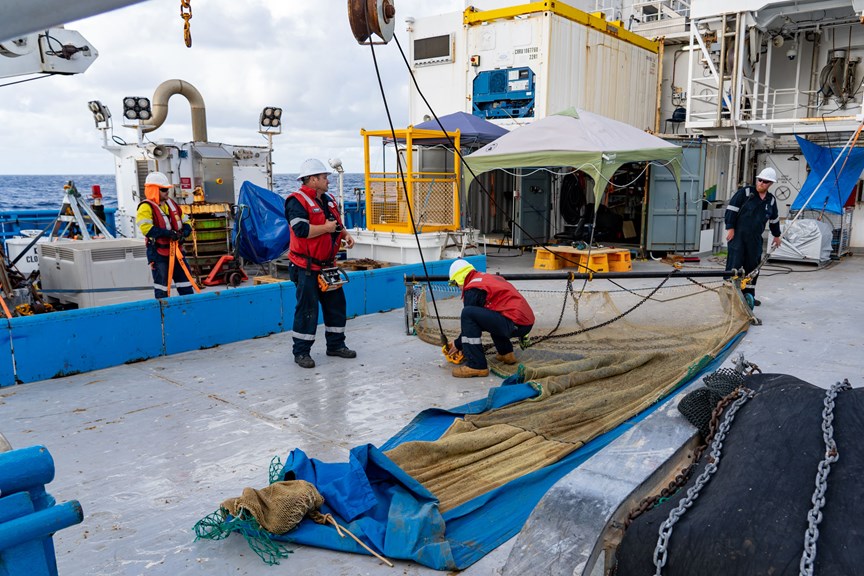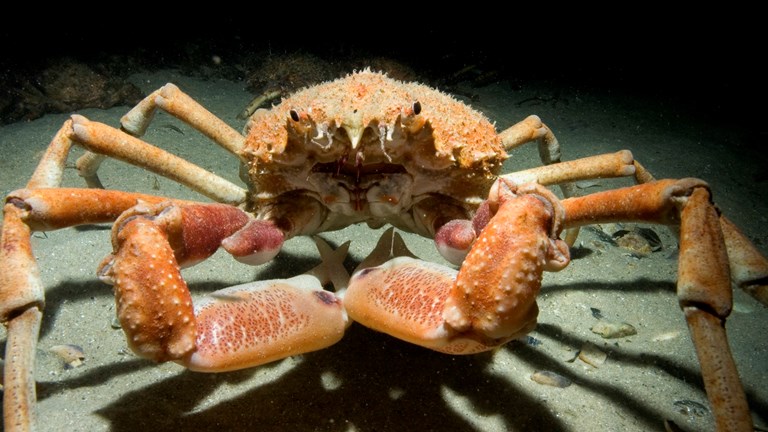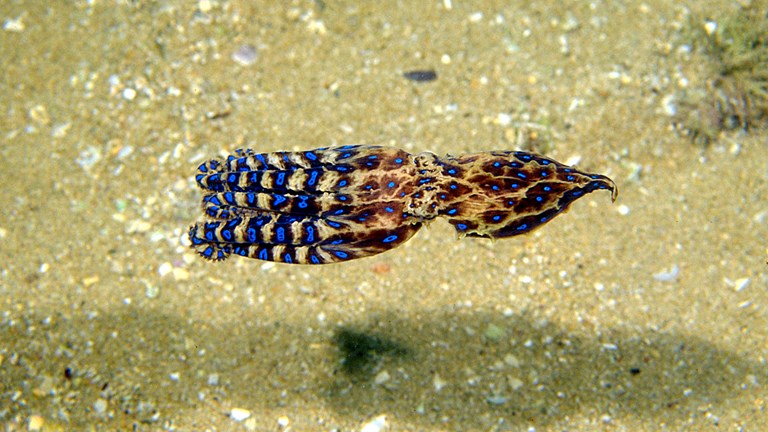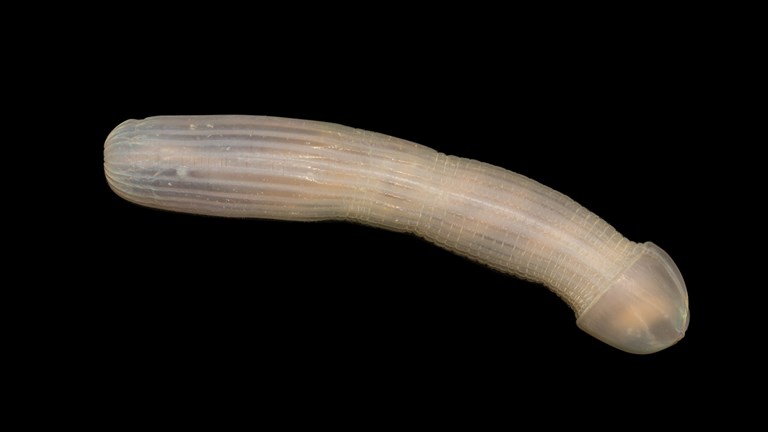Faceless Fish and the deep-sea voyages that found it
140 years separate the discovery of the Faceless Fish, and its re-emergence as a social media star.
The Faceless Fish looks like it could be from another planet.
But, in 2017, this remarkable and bizarre looking deep-sea creature was discovered in Australian waters by scientists exploring abyssal depths off the east coast.
When it was brought aboard the CSIRO research vessel Investigator, they initially thought it to be a new species.
‘We were off Jervis Bay and a gorgeous large specimen of this really long, round-headed fish came up that seemingly didn’t have eyes,’ recalls Di Bray, Senior Collections Manager at Museums Victoria.
‘It had quite large nostrils, a big bulbous head with a body that tapered away to nothing, and a little mouth under the bottom of the head.
‘I was on the shift with John Pogonoski from the Australian National Fish Collection, CSIRO, and we really thought we’d hit the jackpot; I started taking tissue samples for molecular analyses while and John prepared to photograph it.’
But a quick look through the history books revealed that the Faceless Fish had originally been collected by another deep-sea exploration vessel, the HMS Challenger, in the 1870s.
‘We bring a lot of literature on board to identify specimens as best we can because we’re surveying waters that have not been adequately surveyed or have not been surveyed at all before, so we don’t really know what to expect—but this was really weird.’
‘John was flipping through a guide to cusk eels of the world and came across the unmistakable picture.’
‘I was also looking on Twitter later that day where someone had posted a picture of the fish from the original report of the Challenger voyage’
‘He said, “I can never get over this weird fish without a face” and I just thought, well there’s its common name.’
‘It was absolutely serendipitous.’
And once the new specimen hit the internet, it became a viral sensation.
Faceless Fish facts
Its scientific name is Typhlonus nasus (derived from the Greek typhlos, meaning blind, and onos, meaning hake. Nasus is a Latin reference to its nose, so all together it’s a large-nosed blind hake).
And it’s now commonly known as the Faceless Cusk.
The Faceless Fish has been documented living at depths of up to five kilometres in the Arabian Sea, and off the coast of Indonesia, Papua New Guinea, Japan, the Marianas and Hawaii.
The HMS Challenger left the United Kingdom in 1872 and traversed the world’s oceans for four years collecting samples of deep-sea species.
The Challenger crew found the first specimens of the Faceless Fish to the north of the Indonesian island of Sulawesi, and in the Coral Sea off northeastern Australia.
These creatures were found living between 2150 and 2440 fathoms (up to 4.4 kilometres deep in today’s currency).
This video, courtesy of NOAA, shows the Faceless Fish in its natural habitat:
Animals must have specialised adaptations to live at these depths.
‘Life in the deep sea is difficult—pressure, temperature, not much food—and no light from above’ says Di Bray.
‘They have to have really well-developed sensory organs so they can not only find their prey, but so they can avoid becoming prey.
‘And, in the oceanic mid-waters, there’s nowhere to hide.’
Then and now
Scientific sampling for species at this depth also required humans to adapt to the conditions.
Before the HMS Challenger, human knowledge of the deep sea was confined to theory.
The ship itself wasn’t built for deep-sea exploration—it was a converted naval vessel.
In some cases, the scientific equipment also had to be adapted from other items.
The Challenger studied the topography of the ocean floor using a weight attached to the end of a length of piano wire.
That may not sound like an impressive bit of kit but consider what it achieved.
This rudimentary piece of equipment descended to a depth of more than eight kilometres when the crew discovered what is now known as the Mariana Trench.
The deepest known point in the ocean—the Challenger Deep—is in the same region and named after the ship.
The dredge, meanwhile, was designed to skim across the sea floor to obtain a sample of the creatures that lived there—which is how the world came to know about creatures like the Faceless Fish.
These days, things are a little more specialised.
Research vessels like Investigator employ specifically constructed equipment to research marine environments.
Multi-beam sonar is something the Challenger crew could have only dreamed of, but it’s now helping scientists view the sea floor with incredible detail.
The ship’s latest voyage, Investigating Australia’s Indian Ocean Territories near Christmas and Cocos (Keeling) Islands is making good use of this to map areas of the sea floor, including mountains, never seen before.
Underwater cameras give us a window into an underwater world of marine flora and fauna in their natural habitat.
Specialised arrays are used to measure everything from temperature to environmental DNA in water samples.
‘We have all this amazing equipment that can map the seafloor, accurately calculate ocean depths, and sample water quality and seafloor sediments. And we can send the camera down to to give us an idea of the topography and what lives down there.
‘The Challenger had none of that—they were sampling blind—it’s amazing what they achieved,’ says Di Bray.
But the voyage’s chief scientist Tim O’Hara, from Museums Victoria, says they are still very much following in the footsteps of the Challenger.
‘In some ways, it's very similar.
‘We're dropping sampling equipment like nets and dredges down to the sea floor to collect animals and some of them look the same as the equipment they used back in 1872.
‘So we have the best of both worlds—19th century tried and tested technology, with the modern sophisticated electronics.’
Let’s hope it’s enough to catch another glimpse of the Faceless Fish.
See specimens collected on the Challenger voyage in Treasures of the Natural World, at the Melbourne Museum.
The research has been made possible through a grant of sea time on RV Investigator from the CSIRO Marine National Facility.
Editors Note July 20, 2021: CSIRO has taken the difficult decision to suspend the current voyage of the research vessel (RV) Investigator as a precautionary measure to undertake a review of some of the ship’s high-pressure compression equipment. There are no immediate safety concerns, however, ensuring all equipment on board is assured to the highest safety standards is a priority. The planned voyage will be rescheduled as soon as it is able to.

